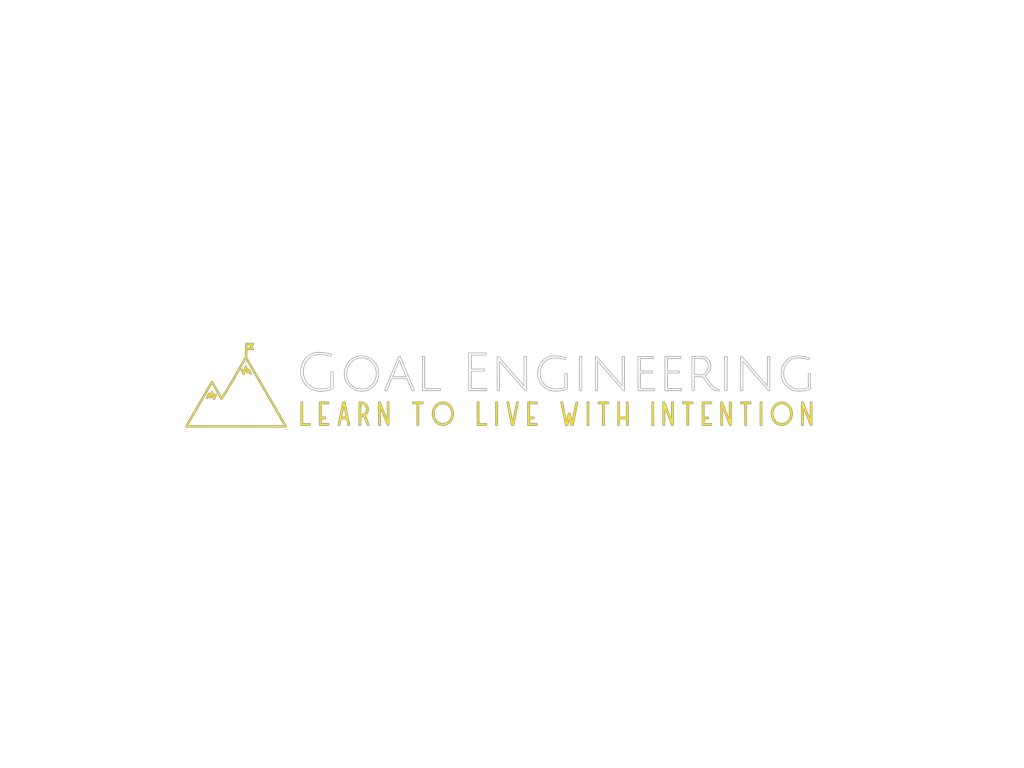Do you ever wonder which goals will improve your life the most? Do you feel like you have so much you want to accomplish but you can’t get any of it done because you don’t know where to start? I’ve spent over 15 years prioritizing my goals, and here’s what I’ve learned about doing it the right way. Let’s start with the big picture.
The 3 steps to prioritizing your goals are:
- List your top 25 goals, 6-7 in each area of life, including faith (or belief), family, finances, and fitness.
- Ask “what is the one goal in each category that if done would make all others unnecessary?”
- Circle your top priority goal in each area of life.
There’s a lot more to it than that though. Let’s jump right in and take a deeper look at each component of these steps!
1. Use Warren Buffett’s 2-List Method to Prioritize Your Goals
“Risk comes from not knowing what you are doing.” – Warren Buffett
As one of the most successful investors in the world, Warren Buffett has a net worth over $100 billion. That means that as of this writing, he’s the seventh wealthiest person in the entire world.
Don’t judge him too harshly for being ultra-wealthy, though. He’s promised to give away 99% of this extraordinary wealth to charity and even made a pledge to encourage wealthy people like him to give away most of their fortunes to charity.
And regardless of what you think about the ethics of owning that much money, it’s worth looking into Buffett’s habits to discover ways we can be successful too. One of the best places to look is at the way he sets goals.
Imagine, for a moment, that you get to sit next to Buffett on a plane ride. You’ve got hours to ask him anything you want. You can learn almost everything he has to teach about life, wealth, and success.
Now imagine what it would be like to sit with him on every plane ride he went on for years. The things you could learn would be nearly endless!
This was the case for Buffett’s personal pilot, Mike Flint. We may not have the crazy opportunity that Flint did of picking Buffett’s brain regularly. But we can still learn from one of the best lessons Buffett taught him.
Buffett explained to Flint that when setting goals, you should divide them into two lists. He recommended these steps to get those lists:
- Write down your top 25 aspirations in life. This is list one.
- Circle the 5 most important ones from the first list to make list two.
Once Flint had tried this himself, Buffett asked what he was going to do with those goals not in his top five. Flint explained that he was thinking, like you might be, that he could work on those in his spare time. But Buffett corrected him:
“No. You’ve got it wrong, Mike. Everything you didn’t circle just became your avoid-at-all-cost list. No matter what, these things get no attention from you until you’ve succeeded with your top 5.”
That’s such a powerful lesson that it almost makes me want to start calling this “The 1-List Method!” Imagine the clarity that Flint must have had at realizing how important those main 5 goals were and how unimportant the others were until he finished those.
And I’m sure you’re already thinking it, but consider the amazing amounts of clarity, motivation, and inspiration you could have by doing the same exercise.
This “1-List Method” is good, but there’s one more question that I often ask myself when it comes to setting goals that can help you discover how to prioritize yours even further.
2. Prioritize Your Goals With The ONE Thing
80% of the results you seek will come from 20% of the work you do. This applies to your job, family, fitness, and everything else you do, and is known as the 80/20 principle.
This means that just 20% of the goals you set will account for 80% of your success. That’s one out of every five. Why, then, would you ever focus on the 80% of goals that only give 20% of your success?
This is exactly what we learned from Warren Buffett earlier. His method even teaches us to focus on just 20% of our goals. But his way only tells you that you should narrow down your goals to find that 20%. What Buffett doesn’t explain is how to discover those top 5 goals that will make the most impact.
I’ve summarized over 400 non-fiction books, and one of the best when it comes to setting goals is Gary Keller’s The One Thing. It’s got a lot to teach, but the 80/20 principle even applies to the book itself. There’s really just a single lesson you need to learn. It’s summarized in the question that’s the premise of the entire book:
“What’s the ONE thing I can do, such that by doing it everything else will become easier or unnecessary?”
Let’s do some magic here and take this idea and apply it to The “1-List” Method from earlier. How about we interject the question into the middle of the steps, like this:
- Write down your top 25 life goals.
- Look at your list and ask yourself “What is the ONE thing here that if I did it would make all of these others easier or unnecessary?”
- With that question in mind, circle your top 5 most important goals.
Now that’s a powerful method for prioritizing your goals! I think we can go even deeper, which we’ll get to in a minute. But first, there are a couple of vital principles to follow as you follow these steps.
Take Your Time Finding Out Your “ONE Thing”
You might have heard of Tim Ferriss from his book The 4-Hour Workweek. He’s an incredibly intelligent man, and also highly skilled at prioritizing what matters most.
I remember a friend telling me once about how he’d heard that Tim Ferriss takes significant amounts of time off frequently to just think and strategize. During these breaks, Ferriss is asking himself what that one thing is that will knock down the other “dominoes” in his life.
And we can see that this is something he does often as Tim has committed to sacrificing new books and investing in new startups, just to name a few.
The point here is that you should take as much time as you need to really narrow down your goals. This is what separates those who work smart from those who work hard. If you want to be a smart worker and get more done in less time, go slow when figuring out what goals to prioritize.
Think about how much more you could get done if you were going down a path that you knew would yield the highest results and make everything else unnecessary. It’s worth taking the time to figure out your ONE thing.
Use The ONE Thing Question to Determine Goals and Plans
One of the biggest problems I see people making when they set goals is setting a plan that they think is a goal.
“Run 3x a week,” for instance, is not a goal, it’s a plan. Losing 10 pounds is a goal, and running multiple times each week is the action step you’ll take to get there. It’s your plan.
I explain this more in my article on the difference between goals and plans. To learn about this idea even further, you can check out this article I wrote on breaking your goals into results and action steps.
The main point to remember about goals and plans is that to prioritize them, you must ask the question from The ONE Thing about both your goals and your plans.
It begins with making your two lists, or rather, narrowing your goals into just one list. That’s how you apply it to your goals.
But once you’ve narrowed those goals down, you must also ask yourself “what is the one action step that if I did would get me to this goal the fastest?” In other words, you’re seeking the plan you should set to reach your goal that will make the biggest and quickest impact.
Be careful about planning to do things you hate, though. If you think your one thing for losing weight is to run every day but you hate running, you’re actually going to get there more slowly than if you choose something you enjoy because you’ll probably quit halfway through or sooner.
So far we’ve developed a pretty succinct method for prioritizing your goals. First, you write down your top 25 life goals, then you take the time to find out what the top impact ones are and focus on only those.
But there’s still one aspect of prioritizing goals that can make this method even more effective.
3. Prioritize Your Goals Into 4 Areas of Life
When I began setting goals as a teenager, my Dad taught me to divide them into four areas of life, with the following priority:
- Faith
- Family
- Finances
- Fitness
This order is wildly effective because it prioritizes the highest impact parts of life. When faith is solid, for instance, family, finances, and fitness all grow.
Each area has an impact on the others, whether positive or negative. And as I’ve used this system for over 15 years I’ve found that this order makes a difference in the impact you can have overall.
That’s not to say that each isn’t important. But it does help, when you’re having a hard time, to run through them in this order to make sure they’re all doing well.
If your faith, or beliefs, are shaky, for instance, then you’re going to have a hard time doing much of anything else because the way you think determines everything else in your life.
Belief is one of the #1 most common things that comes up in the non-fiction books I summarize, if not the most common. It’s vital to your success, and people that write non-fiction books prove it.
For me, faith means religion, but you can think of it as just a belief system, which everyone has whether or not they’re religious.
I saw the importance of this recently. I was at an event to learn how to build a business on YouTube and we were going around giving suggestions for each person’s channel.
It was an open discussion where everybody had previously agreed to take all suggestions without offense. So we knew that we could talk openly. We watched a video of one of the participants and we all kept saying that something just felt off, like she was too tense.
Then one of the leaders of the event said something I’ll never forget. He called out how we could tell that something wasn’t right because she didn’t believe in what she was saying. Or rather, she didn’t believe anybody but her would believe it.
He then explained that what we believe when we’re making a video affects how we come across to our audience.
If the faith aspect of your life is filled with fear, you’re going to have a hard time convincing anyone that you’ll succeed, and that includes yourself.
When you don’t fix that, it bleeds into all other areas of life. If you’re afraid your marriage will fall apart, it will. When you fear losing your job, you start to stumble and make that more likely. And if you’re not confident in anything you do to improve your health, it won’t work.
The opposite is true as well. When you believe your relationships, finances, and fitness are going to thrive, they will.
I’ve gone into a lot of detail with the faith and belief category because I’ve found it’s the most important (and the non-fiction authors would agree). I could do this same thing with all the other areas too.
The second most important lesson I’ve learned from all those non-fiction books is the importance of social connections. The quality of your connection to others stands out as what I’ve so far found to be the most statistically significant indicator of success.
Next would be finances, work, and learning. And finally, fitness, which has the power to improve your happiness, income, mental health, and just about everything else in life.
I see components of all of these in every book that I summarize. The connection between each of them is also a very common theme in non-fiction books. And there’s a reason that marketing professionals teach that these are the categories of life that determine how people make purchases.
I can go on and on about the importance of each of these areas, but we need to look at how you can utilize these to prioritize your goals.
Buffett’s two-list method is great, but we’ve already seen how adding The ONE Thing question to it can improve it. What if we combined these four areas of life with what we’ve come up with so far?
Again, I’m going to add another piece to Buffett’s method, but this time, as part of the first step:
- Make a list of your top 25 most important goals. Write 4-5 goals in each category of faith, family, finances, and fitness.
- Look at your 4-5 goals in each category and ask yourself “What is the ONE goal here that if I accomplished it would make all others easier or unnecessary?”
- With that question in mind, circle your most important goal in each area of life.
Now, instead of just having 4-5 random high-priority goals, you have 4-5 highly-targeted, prioritized goals. You can know with certainty that you’re going to be working on the right things that will have the biggest impact in your life and that you’ll be completely balanced with all of your goals! You can also have the confidence that by working on each of these areas of life, your entire life as a whole will improve as the growth in each individual area feeds growth in all of the others.
Wrapping Up
I mentioned earlier that I’m religious, and as part of that, my family and I read scriptures each night. We only read a little at a time because we have little kids. But I also keep it short so I can focus on these two questions:
- What did you learn?
- What will you do about it?
I ask these because I know that learning might be good, but application is the key to changing your life. Facts and knowledge go only so far. But wisdom, which is the application of knowledge, is what will take your life to the next level.
So I ask you, right now, what did you learn and what will you do about it? Will you follow the pattern I’ve established to prioritize your goals into the most important categories?
If you take what I’ve given and actually do something with it, your life is going to change. You’ll become more efficient and I even have a feeling you’ll be happier as you set goals because you’ll have confidence that they are the right ones.
I know because I’ve been doing this for 15 years, so I know that it works. I can’t wait to see how prioritizing your goals with this method changes your life!





